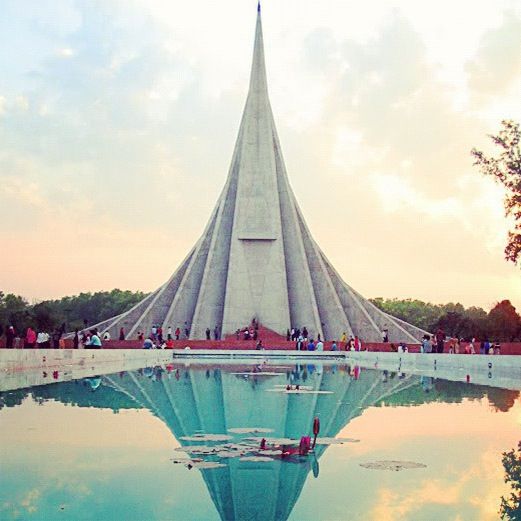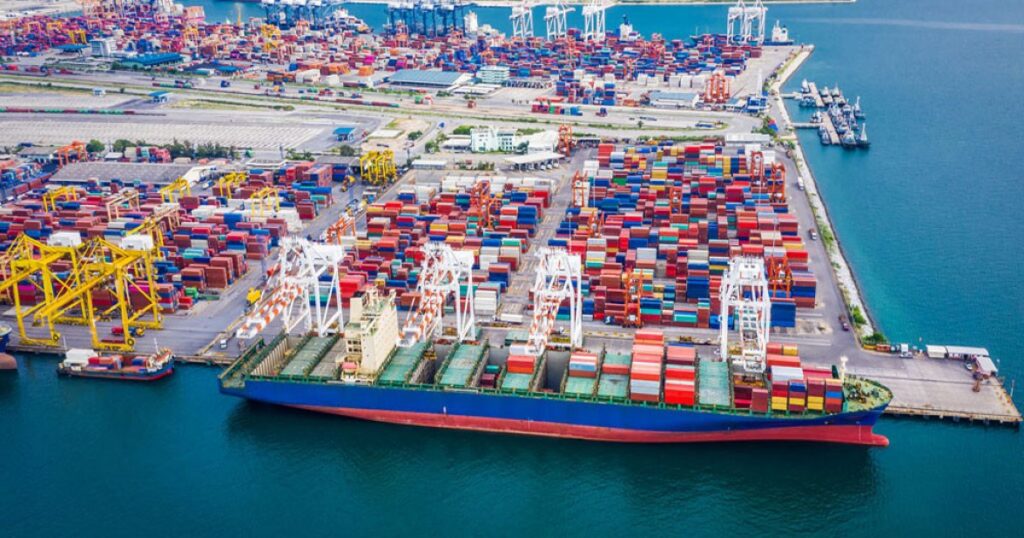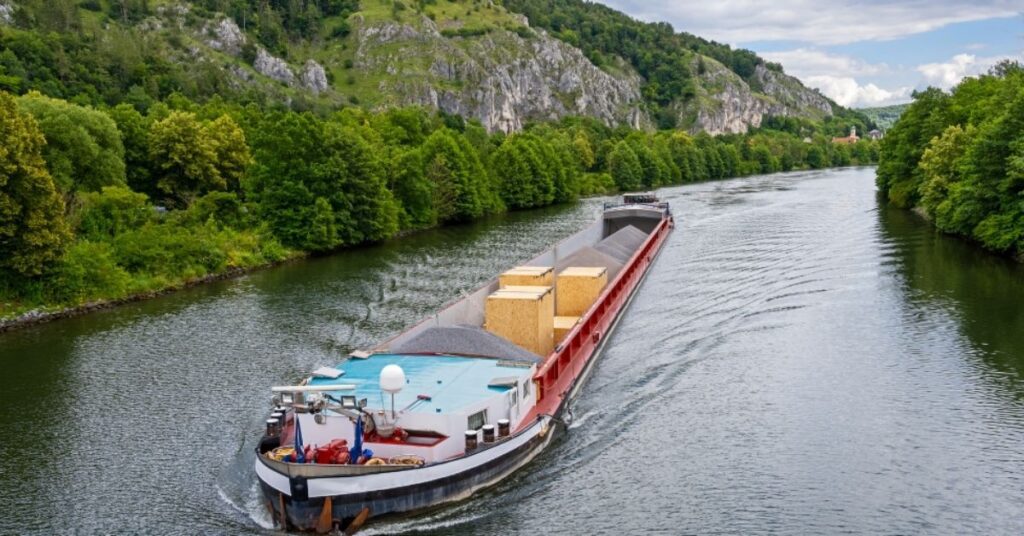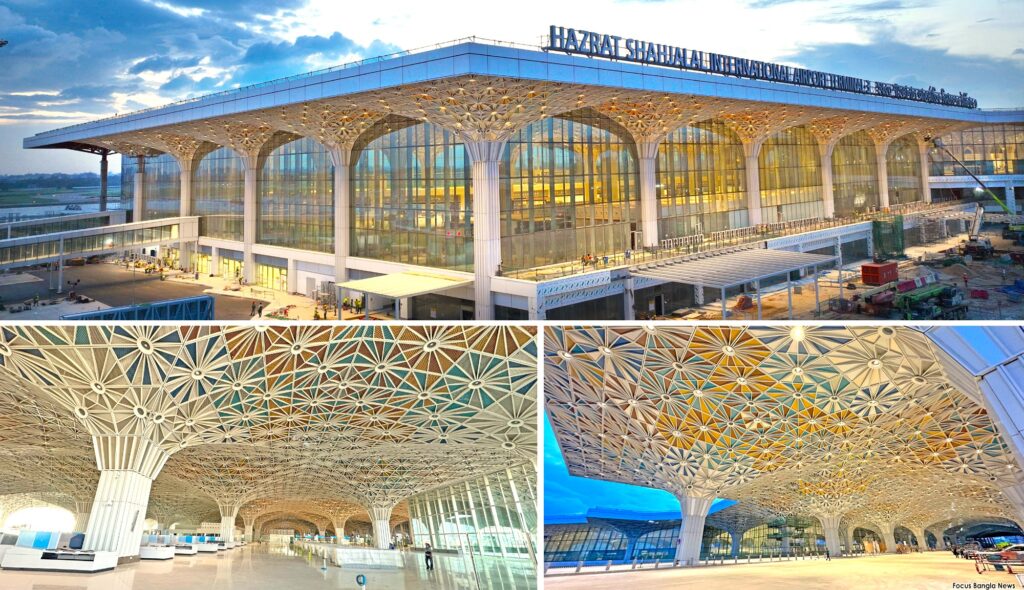KEY FACTS
Population: 158.2 million (8th largest in the world) where nearly 60% being under 25 years, 3% over 65
Land Area: 147,570 sq km
Main Cities: Dhaka (13 million), Chittagong (5 million)
Languages: 95% Bangla, English widely spoken
Ethnically homogeneous: 98.9% Bengalis


ECONOMIC SCENARIO
Bangladesh, officially the People’s Republic of Bangladesh, is a country in South Asia. Located in the Bengal region, it shares borders with India and Burma (Myanmar) and has its coastline on the Bay of Bengal. With a population of approximately 156.6 million as of 2013-14, and an economy on a growth path, Bangladesh has been listed in the “Next 11 after BRIC” in Goldman Sachs analyst reports, while JP Morgan has included Bangladesh in the “Frontier Five” economies. Credit rating agency Standard and Poor (S&P) and Moody’s have also placed Bangladesh ahead of all countries in South Asia, except India. The business climate in Bangladesh is on an upswing.
Bangladesh emerged as an independent and sovereign country in 1971 following a nine month war of liberation with Pakistan, faced several obstructions to growth, such as widespread poverty and natural disasters, as well as political turmoil and military coups which had strained the growth of the Bangladesh economy. Yet, despite such prevailing economic turmoil, Bangladesh has remained resilient with an optimistic approach towards positive economic growth. Traditionally an agrarian economy, Bangladesh has established itself as the Textile and readymade Garment powerhouse of the world, with almost all major global apparel brands sourcing from Bangladesh.
The global economic downturn during 2007-2009 had some degree of negative impact on the Bangladesh economy. The economy had experienced a modest fall in GDP growth during the period. The GDP grew at a rate of 6.19 percent in FY200708 and 5.74 percent in FY 2008-09. In the wake of global recovery, the economy of Bangladesh rebounded and recorded 6.07 percent growth in FY 2009-10.
According to the provisional estimate of Bangladesh Bureau of Statistics (BBS), GDP has posted a growth rate of 6.66 percent in FY 2012-13. This performance is mainly attributable to the sustained growth in the agriculture sector coupled with recovery of growth in the industry sector and the satisfactory performance of the service sector.
In recent times, with the relative improvement in the socio-political situation of Bangladesh, Bangladesh’s economy has portrayed a strong upward trend with the value of GDP at current market prices reaching TK. 7,87,495 crore in FY 2012-13, which was 13.42% higher than the GDP of previous year (TK.6,94,324 crore). In FY 2012-13, the per capita GDP was estimated at TK. 53,236 which was 11.99% higher than the per capita GDP of TK. 47,536 a year earlier. On the other hand, per capita national income stood at TK. 57,652 in FY 2012-13, which was TK. 51,959 in the previous fiscal year. The FDI into Bangladesh was 913 million USD in 2012, almost doubling in the last 7 years, and showing a robust growth from USD 700 million in 2011.
With the economy gradually opening up, significant spending on numerous infrastructure development projects in terms of roads, power, port and rural development have complimented the high GDP growth rates experienced by Bangladesh.

KEY ECONOMIC FACTORS
External Trade
Gross Domestic Product 2012-13(P)
Saving and Investment (As a Percentage of GDP)
Trade Balance (US$ Million): 7,328
External (US$ million): 22.924
Export (As Percentage of GDP): 29.1
Imports (US$ Million): 33.657
Imports (As Percentage of GDP): 42.7
GDP at Current Product (In Billion Tk): 7,875.0
GDP at Constant (Base year-1995-96, In Billion TK.): 3, 848.9
GDP Growth Constant Price (%): 6.66
Per Capita National Income (In USD) FY 2023: 2,765
Gross Domestic Savings :19.6
National Savings: 28.4
Total Investment: 24.7
Public: 5.3
Private: 19.5
Price Trends
Exchange Rate
Capital Market (Share Price Index, as on June, 2012)
Consumer Price Index: 241.02
Rate of Inflation (CPI): 8.80%
Taka/US$ (Annual average): 109.26
Dhaka Stock Exchange (Base=100): 5, 093
Chittagong Stock Exchange (Base-1000):17,060
CONNECTIVITY
ROAD, RAIL, AIR, WATER
ROAD
In Bangladesh, among the various modes of transport, the road transport system has been playing a significant role in transporting passengers and goods. As of January 2010, Local Government Engineering Department (LGED) has so far constructed a total of 133,514 km3 (64,691 km dirt road and 68,823 km paved roads) upazila and union roads and 971,498 bridges/culverts.


RAIL
About 32% of the total area of Bangladesh is effectively covered by railways. Bangladesh Railway had a total network of 2,835.04 km (Broad Gauge 659.33 km, Dual Gauge 374.83 km and Meter Gauge-1,800.88 km) and a total of 440 stations at the end of the year 2008-2009.
WATER
The landscape of Bangladesh is dominated by about 250 major rivers which flow essentially north-south. Bangladesh Inland Water Transport Authority (BIWTA) has been established by the government for maintenance of navigability of ports and channels while the state-owned BIWTC provides passenger and cargo services in inland waterways and coastal areas of the country. The entire coast along the Bay of Bengal is 710 km long. There are two major ports in the country. Chittagong, the oldest port, has been an entry-port for at least 1,000 years. The Mongla port in Khulna region serves the western part of Bangladesh.


AIR
he Civil Aviation Authority is a public sector entity entrusted to construct, maintain and supervise airports and regulate air traffic. There are 13 operational airports at present and Short Take-off and Landing (STOL) ports in Bangladesh. These are Dhaka, Barisal, Chittagong, Comilla, Cox’s Bazaar, Ishurdi, Jessore, Rajshahi, Syedpur, Sylhet and Thakurgaon. Of these, the airports at Dhaka, Chittagong and Sylhet serve international routes.
SOCIO ECONOMIC CLASSIFICATION
SOCIO ECONOMIC CLASSIFICATION OF POPULATION
The socio-economic classification of the population of Dhaka city is carried out on a yearly basis by Nielsen Bangladesh as a part of their survey report on Nielsen Media and Demographic Survey (NMDS).
For the SEC classification purpose the following information are considered:
■ Marital status
Number of years married
Number of children
■Family size
Education of respondent and chief wage earner
Occupation of respondent and chief wage earner
Monthly Family Income (Disposable) and respondent’s personal income
■ Age and sex
■ Ownership of household durable
Ownership of land (arable, homestead etc,)
Ownership of house & types
48%
The NMDS (National Minimum Data Set) Survey 2011 was conducted in April 2011 and a sample size of 14,400 was considered for the survey purpose. According to the survey, only 12% of the city’s population belongs to SEC A category with an average income of more than BDT 30,000 per month whereas 40% of the population belongs to SEC D category having a monthly income less than BDT 6,000. Within SEC A, the 12% of the total population may be further divided into SEC A1, A2, A3 and A4. SEC A1, represents the population earning more than BDT 150,000 per month.

This rage of industrial and infrastructural growth helped in creating a large reservoir of skilled and semi-skilled work force suitable for multi sectors.
Over the past few years, Bangladesh has taken bold steps towards growth in the industrial sector and there has been an influx of foreign investors into the country.
In short, Bangladesh is a country on the march. With its huge potential and large trained population base, the country is capable of lifting itself to a higher stage of economic reform; foreign exchange control is standardized, private entrepreneurship is encouraged, privatization and public private partnership is more focused, a number of incentive oriented policies have been formulated to attract foreign investors resulting into development as well as assisting other nations to cope with the manpower shortage by exporting surplus Bangladeshi manpower to those countries.
KEY SECTORS
Mostly remarkable investment sectors to invest in Agriculture, Garments, Textile, Power, IT in Bangladesh
TOURISM
Monuments, resorts, beaches, picnic spots, forests and tribal people, wildlife of various species
INFRASTRUCTURE
Dynamic range of infrastructure development happened in recent ages in Bangladesh using local workforce
HOTELS
A wide collection of international hotels available that part 5 start hotel chain. Please click below to see them.
HOSPITALS
With high standard of services and technology in Bangladesh we have wide range of hospitals to provide healthcare
TRAINING CENTERS
Vocational and training centers available to train people with specific skills to make the manpower skilled
SUITABLE SOURCE OF MANPOWER
Bangladesh
Through the passage of time since the country emerged in 1971, Bangladesh was prone to overpopulation. Around the end of seventies the population of the country was looked at as a problem. The Government of Bangladesh converted the problem to its power by exporting
Skilled, Semi-skilled, and unskilled manpower. The country now is so mature in this field that it managed to keep a solid GDP growth, which has a massive contribution from the remittance of the exported manpower all over the world.
Bangladesh Government implemented and organized the administration of exporting manpower out of Bangladesh Ministered by the

The MINISTRY OF EXPATRIATES’ WELFARE AND OVERSEAS EMPLOYMENT (http://www.probashi.gov.bd) is capable of taking care of most of the requirements of recruiting agencies and the qualified workers. There are four government organizations under this ministry-
BMET
www.bmet.gov.bd
Probashi Kallyan Bank
www.pkb.gov.bd
BOESL
www.boesl.org.bd
Welfare Board
www.wewb.gov.bd
BMET
Bureau of Manpower, Employment and Training
(BMET) was established in the year 1976 by the Government of the People’s Republic of Bangladesh as an attached department of the then Ministry of Manpower Development and Social Welfare with specific purpose of meeting the manpower requirement of the country and
for overseas employment as well. BMET is engaged for overall planning and implementation of the policies and strategies for proper utilization of manpower of the country for overseas employment.
Offices under BMET:
- 42 District Employment and Manpower Office (DEMO)
- 04 Divisional Employment and Manpower Office.
- 47 Technical Training Centres (TTC). 104 Institute of Marine Technologies (IMTs).
- 04 Institute of Marine Technology
- 03 Apprentices Training Offices
TRAINING COURSES CONDUCTED BY THE TTCS-
- 02 Diploma Courses for 04 months duration 104 Trade Courses for 02 years duration
- 04 Trade courses for 02 years duration
- SSC (Vocational) Courses for 02 years duration
- Skill Certificate Course for 01 year duration
- Short term (06/03 months duration) Courses of 48 trades.
- 02 months residential training courses for Hong Kong bound domestic female workers
- 21 days training courses for domestic female workers.
07 days induction training for South Korea bound workers under Employment Permit System (EPS).
- 03 days induction training for Kingdom of Saudi Arabia (KSA) bound workers.
PROBASHI KALLYAN BANK
Probashi Kalyan Bank was established on 12 October 2010 with a paid up capital of 100 crore taka and capital of 95 crore taka received from Wage Earner’s Welfare Fund and 5 crore taka received from the Government respectively. Honourable Prime Minister inaugurated the bank on 20 April 2011.
OBJECTIVES OF PROBASHI KALYAN BANK
Provide collateral free loan with low interest rate for aspirant migrant workers;
Facilitate self-employment and encourage investment in Bangladesh by the returned migrant workers.
Facilitate sending remittances at low cost and faster rate with the assistance of using modern IT facilities.
TRAINING COURSES CONDUCTED BY THE TTCS-
- 02 Diploma Courses for 04 months duration 104 Trade Courses for 02 years duration
- 04 Trade courses for 02 years duration
- SSC (Vocational) Courses for 02 years duration
- Skill Certificate Course for 01 year duration
- Short term (06/03 months duration) Courses of 48 trades.
- 02 months residential training courses for Hong Kong bound domestic female workers
- 21 days training courses for domestic female workers.
07 days induction training for South Korea bound workers under Employment Permit System (EPS).
- 03 days induction training for Kingdom of Saudi Arabia (KSA) bound workers.
BOESL
Bangladesh Overseas Employment and Services Limited (BOESL) is the only “state owned” manpower exporting company in Bangladesh. The Government of the People’s Republic of Bangladesh established the company in 1984 to earn more foreign exchange by way of exporting skilled and unskilled manpower. Based on the operating principle ‘of right person for right job’, BOESL aims to offer transparent and efficient services as a development partner based on mutual trust and to minimize migration cost in comparison to others. To that end, BOESL is providing honest, efficient and quick services to the valued foreign employers in the field of recruitment and deployment of manpower with the full satisfaction of the foreign employers. BOESL realises service charge from the selected workers as “no profit no loss basis.” This is the only company in the public sector created by the Government to operate in healthy and professional competition with other private agencies working in this sector and to ensure transparent and safe migration with low migration cost.
- BOESL is run by a Board of Directors. The Directors are government officials. The Secretary, Ministry of Expatriates Welfare and Overseas Employment is the Chairman of the Board.
- BOESL runs on its own income.
- It is sending workers to South Korea with a transparent recruitment process through Employment Permit System (EPS).
- Female garment workers are going to Jordan by BOESL.
- BOESL sends professional, skill and semi-skill workers with a minimum cost in different countries. Domestic female workers are going abroad with zero migration cos
WEWB
Wage Earners’ Welfare Board; The Government of the People’s Republic of Bangladesh established Wage Earners’ Welfare Board (WEWB) in 1990, with the Bureau of Manpower, Employment and Training (BMET) to extend welfare services to the migrant workers. A Board of Directors composed of senior level inter-ministerial representatives operates this fund. Chaired by the Secretary of the Ministry of Expatriates’ Welfare & Overseas Employment, the Fund includes members from BMET, Ministry of Home Affairs, Ministry of Law, Justice and Parliamentary Affairs, Ministry of Finance, Ministry of Foreign Affairs, Ministry of Civil Aviation and Tourism, Bangladesh Bank, WEWB, Bangladesh Association of International Recruiting Agencies (BAIRA). As per section 20 of the Emigration Rules, 2002, migrant workers should deposit a fixed amount of money, as shall be determined by the Government and with that money the Government shall form a welfare fund. This fund is operated by the Board of Directors which is called “Wage Earners’ Welfare Board”. Migrant workers and their family members are being assisted through this fund.
SOURCES OF INCOME OF WELFARE BOARD
- Provide a pre-departure briefing regarding laws, culture, language etc. of the concerned country to migrant workers
- Provide immigration assistance to the migrant workers at Expatriate Welfare Desk in the airport
- Provide legal aid to migrant workers.
- Provide financial assistance to ailing and injured expatriate workers.
- Provide financial assistance for burial and repatriation of deceased migrant workers.
- Provide death compensation at 3 lac taka financial aid to the family of the deceased migrant workers.
- Scholarship to the children of the migrant workers.
On top of the government effort the government approved recruiting agencies also develop themselves. They came under an association; Bangladesh Association of International Recruiting Agencies(BAIRA www.baira.org.bd/) and provide a much organized service now.
EDUCATION & TRAINING ASPECT

Education is given the top most priority by the policy makers of Bangladesh. Each year a huge number of school, college, poly-technique & university graduates are being added to the nation’s workforce. Due to the slow but steady growth of the economy the country is having a large reservoir of surplus educated and trained workers.
Primary education is mandatory now. Only a small percentage of children are out of the school system currently. After primary school a portion of the students drop out and start working as juvenile workers due to their social placement and need. The others continue till junior school and then go for vocational training, thus another chunk of students are out. Then another group gets out after the secondary level of education completing 10 years of schooling and joins the workforce by completing a diploma at any poly-technical course. Then gradually others join in after completing higher secondary, bachelors or higher education as per their socio-economic status.
A large workforce are being trained and turned into skilled labor through on the job training. Such sectors include construction, welding, pipe fitting, aluminum frame makers and fitters, mechanical jobs, road and riverine transportation operators, agriculture, forestry and fisheries etc.
Fluctuating economy, volatile weather conditions with rain and flood in certain areas every year, and enduring low level of income created a nation which has learnt to do the best with the least and live joyfully under the harshest of conditions. These qualities make the Bangladeshi work force an asset for those countries who are in need of affordable, hardworking, capable and well-disciplined manpower. Today more than 3 million skilled, semi-skilled and unskilled workers are employed by reputed organizations all over the world. These workers have been able to gain the confidence of their employers for their sincerity, hard work and most of all the spirit of teamwork.
COST ASPECT
Among the labor exporting countries such as Sri-Lanka, Pakistan, India, Thailand, Philippines and Indonesia, Bangladesh has a comparatively lower GDP. This factor combined with the fact that the human resources availability vis-à-vis low employment opportunities within the country made the wage structure of Bangladeshi labor the lowest.
SOCIO-CULTURAL ASPECT
The primary manpower importing countries over the last few decades have been the Middle Eastern Muslim countries and Malaysia which is another Muslim country. Majority of the workers of Bangladesh being Muslim, the time taken for the cultural and social adaptation in the host country is minimal. Due to the similar seasons of the weather system the environmental adaptation is also very easy.

THE CONVENIENCE OF MOBILIZATION
Bangladesh’s proximity to the Middle East as well as the South East Asian labor importing countries is a great advantage. The flying time from Dhaka, the capital of Bangladesh to most of the Middle Eastern cities is 6 hours or less. It takes only 3 and a half hour to fly to Malaysia. With 3 International Airports – Hazrat Shahjalal International Airport, (DAC) Dhaka; Hazrat Shah Amanat International Airport, (CGP) Chittagong and Osmani International Airport, (ZYL) Slyhet Bangladesh is well connected with the Middle East as well as with Malaysia and Singapore which are the manpower importing countries. This makes easy, quick and safe mobilization of workforce to and from the countries. The Air lifting capacity is huge as everyday 40 flights of several airlines fly in and out of the International Airports of Bangladesh.



TYPE OF EXPERIENCE WORKFORCE AVAILABLE
- Heavy Vehicle Operator
- Hospital and Clinical Personnel
- Industrial Workers for Factories
- Maintenance Service Worker
- Oil Field Construction Worker
- Office Personnel
- Service Worker
- Surveyor & Drafting Personnel
- Sales Personnel
- Ship Breakers
- Telecommunication Worker
- Transport Equipment Operator
- Telephone Operator
- Teachers & Professors
- Welders
- Agricultural Worker
- Animal Husbandry Worker
- Administration & Management Worker
- Bakery Personnel
- Building & General Construction Worker
- Catering & Restaurant Workers
- Cleaners
- Doctors & Nurses
- Electrical & Air Conditioning Technicians
- Engineering Personnel
- Fabrication Workers
- Forestry Workers
- Fishermen
- Food Service Personnel
- Ready Made Garments Worker
- RMG Machine Operators
- Architecture & Interior Designer

